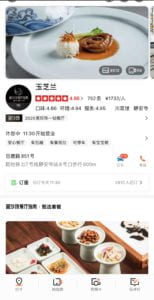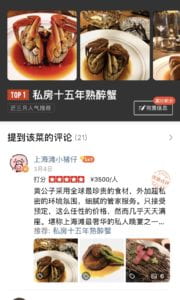Pilcher discussed the culinary knowledge infrastructure and examined its constant change over the long history. According to Pilcher, cookbooks, the wider publishing industry and restaurants have encouraged innovation and complexity in the kitchen. I quite agree with Pilcher’s argument that “the modern infrastructure of culinary knowledge has arguably been concerned less with the transmission of existing practices than with the pursuit of novelty and innovation.” (pp. 118) Importantly, media plays a vital role in widely disseminating culinary knowledge and building famous food brands. As the article said, “both old and new media clamor for attention by constantly repackaging culinary instruction, criticism, and entertainment.” (pp. 118) In an era with advanced social media, in an international city like Shanghai, we can witness the boom of culinary innovation, but such competition of innovation may be driven by capital markets and profits essentially.
To gain the attention of customers in the fierce competition, many restaurants are doing their best to create unique innovation. As we all know, China has “Eight Major Cuisines”, and nowadays many restaurants have tried to reform these traditional cuisines in combination with rare ingredients and Western cooking methods, advertising themselves as new factions. For example, Yu Zhi Lan is a typical representative of new-style Sichuan cuisine, and it’s also a one-diamond restaurant on the Black Pearl list, with an average of one thousand and seven hundred RMB per person. It incorporates rare ingredients like the high-end Japanese beef, black truffles, lobster into Sichuan cuisine, and presents cuisines in a concise and elegant style, boasting its brand image with such innovations. However, it has received criticism from some gourmets before, because its so-called innovation doesn’t improve the taste of the dishes or form a new style, but is more like a strange modification of the dishes in order to show the high-level image of the brand. Take the dish Private cuisine: 15-year-old wine preserved crab for instance. Generally speaking, chefs use yellow wine to marinate the crab, but Yu Zhi Lan uses 15-year-old Mao Tai, the extremely expensive wine to marinate it. To be honest, such innovation could bring subtle differences in taste, which is undoubtedly a perfunctory change with the only purpose of maximizing profits.

The homepage of Yu Zhi Lan on Da Zhong Dian Ping app

The cuisine called Private cuisine: 15-year-old wine preserved crab and a comment that highly praises it by a KOL
Even so, some people are still willing to pay high prices to eat, and post many pictures on social platforms to brag about the special features of this dish. There is a hidden logic behind this: the restaurant uses repackaging to make traditional dishes present a completely different appearance and high-end grade, and those customers hope to reflect their social status and great taste by consuming these symbolic dishes. Innovation has enriched the symbolic meaning of cuisines, but the useful knowledge in the culinary knowledge infrastructure hasn’t increased. Additionally, some KOLs who have been paid by the restaurant help conduct promotion on various social platforms to reach a wide range of the audience. For consumers in a big city like Shanghai, they seem to have many choices when picking up a restaurant to eat, but every time they want to chase the most popular cuisine, they are actually the object of hunting in the web woven by the food system.